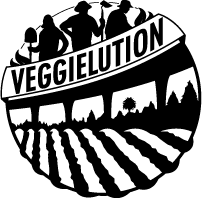The Garden Teacher - Final Part
/Remarkable things have been happening behind-the-scenes here at Veggielution. In this bi-weekly blog series, our Youth Educator Janaki takes us to an elementary school on San Jose’s East Side, Aptitud Community Academy, where Veggielution has directed a grant-funded school garden program for 4 years. Highlighting snapshots and stories from her year as “The Garden Teacher”, in this final year of a grant cycle with no prospects for renewed funding, Janaki reflects on the struggles and transformations of a School Garden, and the mirroring, interconnected realities of the community and society around it.
I will say it: the best food in San Jose is found on the East Side. Here you will find real, raw, traditional food ways still going strong. The unassuming taco stand owned by the Mexican family just a block from Veggielution is, without a doubt, the best place to get a thick, hand-pressed, freshly cooked corn tortilla filled with traditional fillings of sauteed squash blossom (flor de calabaza), corn fungus (huitlacoche) and just the right amount of Oaxacan cheese. Across the street, at the small Vietnamese-owned eatery which serves a largely Vietnamese Buddhist vegetarian clientele, you will find tofu and fresh soy milk made daily in-house, and generous steaming hot bowls of tomato-tofu-noodle soup (bun rieu) served with toppings of fresh bean sprouts, mint and cilantro. What the food at both of these places has in common is that it is made with skill, understanding, and love. I can see it and taste it; I was lucky to be raised on food made in much the same way. (My mouth waters as I think of the Gujarati thali, a well-balanced plate of hot basmati rice, mung dal, curried vegetables, homemade yogurt, fresh-off-the-skillet flatbreads, and spicy pickle on the side.) Food for the soul. Unfortunately, most food in our society is not made like that anymore.
It's part of the reason for why I became the Garden Teacher. There is a stunning disconnect between our souls, bodies, and food. For a generation whose typical answer to the question: "Where does food come from?" is: "the grocery store", my students now know far more than the average: carrots come out of the dirt, not a bag; soil is vibrant and crucial, not gross; and the Red 40 coloring on a Hot Cheeto does not contribute to health the way the red of a beet or strawberry does. And in a years-long tradition of the Alum Rock School District to honor something that is not in most history books (yet is relevant to every youth and adult in the nation) Aptitud students and teachers engage in a peaceful 2-mile march each spring to honor the work of Cesar Chavez and the United Farm Workers. They chant the campaign slogans:
"¡El pueblo, unido, jamás será vencido!/ The people, united, shall never be defeated!"
"¡Si se puede!/ Yes we can!"
They learn about the grape boycott of the '60s. Some of the students have family members who used to, or do, work in the fields, manually tending or harvesting the crops that end up in grocery stores around the nation. They know that food has not always come with fairness.
They encounter something different, on their yearly field trip to Veggielution: friendly volunteers, workers who are making fair wages, and a farmscape teeming with life and safe food, free of synthetic pesticides and fertilizers. The possibilities are tangible. Edible. It's a far cry from the stunningly harsh reality that persists today for most farmworkers who produce the majority of food our nation eats, a reality that is generally hidden from our public view. What will happen, if we do not take responsibility for educating our youth (and adults) on issues of food justice and food sovereignty? What has already happened?
I recently had the good fortune to meet Dr. Ann Lopez, the founder of the Center for Farmworker Families, an organization that works for farmworkers in Central California and their family members in Mexico. (If you are not yet familiar with issues facing the people who produce most of what we eat, the CFF website has a great list of books and documentaries to get started). In 1994 after the North American Free Trade Agreement (NAFTA, or TLCAN – el Tratado de Libre Comercio de América del Norte) took effect, government-subsidized U.S. corn flooded the Mexican markets without tariffs. Mexican farmers, who for thousands of years had cultivated the world's most diverse genetic repository of corn varieties, lost their ability to compete with the heavily subsidized “cheap” U.S. imports. Millions of Mexican farmers were forced to leave their land, leading to a mass migration into the cities, and subsequently over the border as undocumented immigrants: many of whom work in California, producing 1/3 of our nation's vegetables and 2/3 of our fruits and nuts. Many of these people endure extremely exploitative working conditions. The same issues that drew Filipino and Chicano farm workers together to strike and urge boycotts in the '60s are still present today. Except now, we have screens to sedate our collective brains and transgenic, calorically empty food to fill our bellies, and national boycotts are nowhere to be seen...yet. Strawberries, anyone?
Food justice and garden-based education go hand in hand. Vibrant, love-filled food creates vibrant, loving people and communities. Let us open our eyes to this truth, and let us shed the willful ignorance that perpetuates otherwise. Our humanity depends on it.
Would you march with the students of Aptitud?

